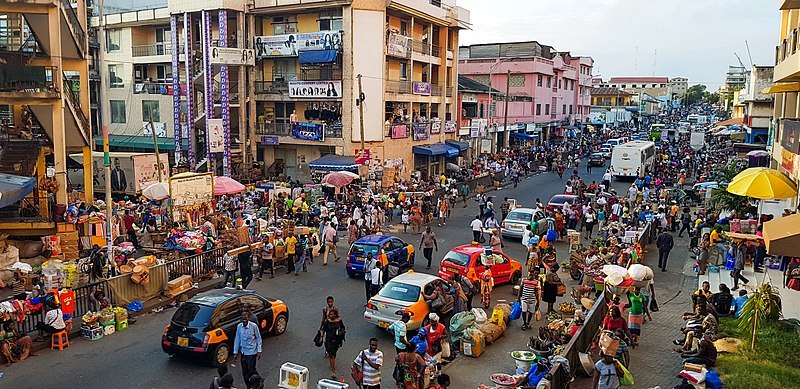Economic growth in sub-Saharan Africa is expected to slow this year according to the World Bank, due to weak growth in the largest economies in this geographical area, namely South Africa, Nigeria and Angola.
Economic growth in sub-Saharan Africa is expected to slow to 2.5% in 2023 from 3.6% in 2022, according to a World Bank press release. In its latest “Africa’s Pulse” report, the institution states that growing instability, weak growth in the region’s largest economies and persistent uncertainty in the global economy have weighed on growth prospects.
The economy of South Africa, the most industrialized country in this geographical area, is expected to grow by only 0.5% this year, due to the energy crisis the country is facing. Major oil producers Nigeria and Angola will see their growth slow to 2.9% and 1.3% respectively, due to falling international prices and monetary pressures affecting oil and non-oil activities. .
The sub-Saharan region of the continent is also hit by terrorist attacks, internal conflicts and coups, leading to sanctions which have disrupted economic activity. More than half of its countries (28 out of 48) have seen their growth estimates for 2023 revised downwards.
Sudan’s economic activity is contracting 12% this year due to internal conflict that has disrupted production, destroyed human capital and crippled state capacity. “Excluding Sudan, the region is expected to grow by 3.1% in 2023,” the report states.
For the economic growth of regional integration institutions, that of the East African Community (EAC) is expected to be 4.9%, while that of the West African Economic and Monetary Union ( UEMOA) is expected to grow at 5.1%. In the report, overall inflation in sub-Saharan Africa shows a drop to 7.3% this year compared to 9.3% in 2022. Although several central banks in the area have decided to tighten their monetary policy, this rate remains higher. to the objectives in most countries.
In terms of debt, the share of countries in the region eligible for the International Development Agency (IDA) and which present a high risk or which are already in a situation of excessive debt increased from 27% in 2015 to 55% at the end of June 2023, indicates the Bank. Risks of debt distress have increased significantly due to rising debt levels and increased non-concessional borrowing, exacerbated by the Covid-19 crisis.
It should be noted that non-Paris Club bilateral and commercial creditors have become major sources of Africa’s sovereign debt, particularly China. The Middle Kingdom’s share of debt has increased from just 1% in the mid-2000s to 14% of total external debt in 2021, according to data from the African Development Bank (AfDB).




















Réagissez à cet article